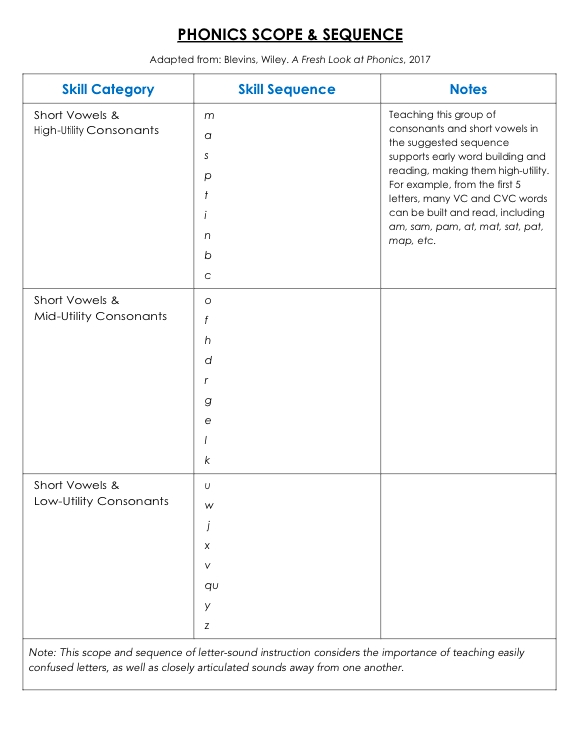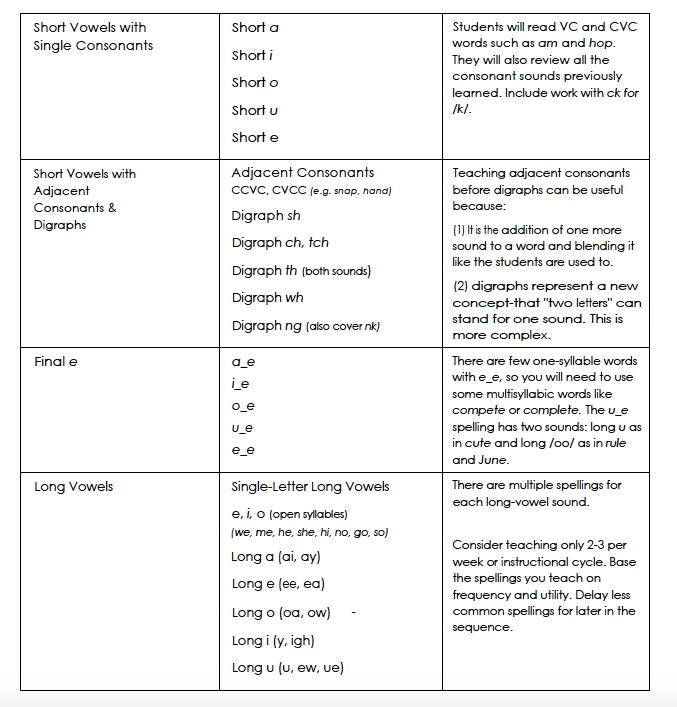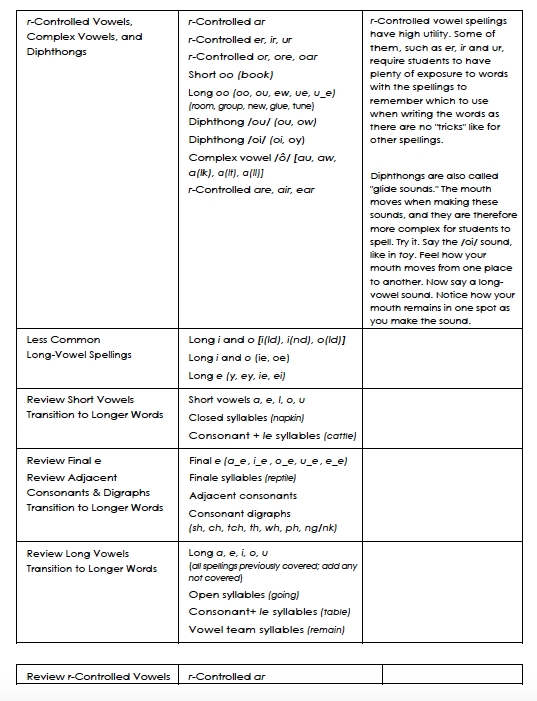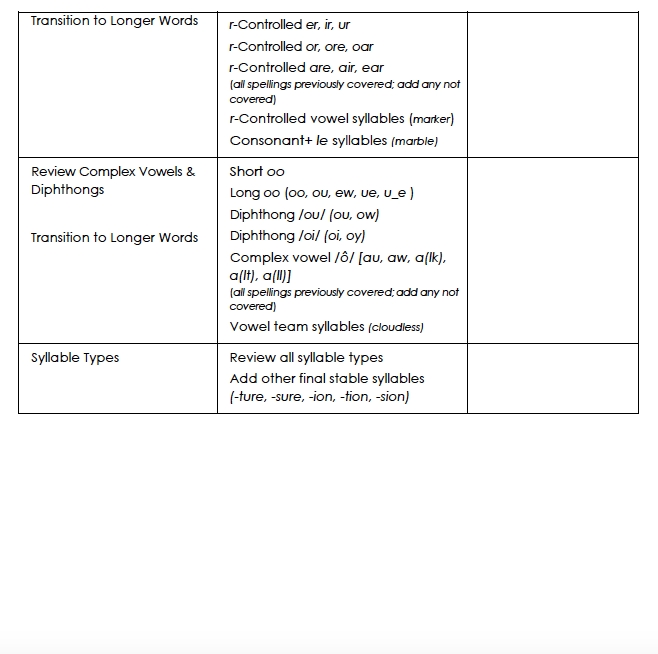Explicit and sequential phonics instruction supports learners’ abilities to decode and encode with success. This instruction should be guided by a thoughtful scope and sequence. The scope is the content to be taught, while the sequence is the order in which the content is taught to ensure that over time the foundational phonics skills and patterns build upon each other and are mastered (Mesmer, 2019).
A scope and sequence provides clear learning targets for small-group and whole-group phonics instruction and practice, while helping to identify which decodable texts would provide appropriate practice for readers to consolidate their newly acquired phonics skills. Children's writing reveals which letters, sounds and letter patterns are not yet solidified and which would benefit from additional instruction and practice.
There is not one "right" scope & sequence. Teachers may follow a scope and sequence that accompanies their decodable book series, or from another evidence-based source. What is important is that teachers have one, and that it thoughtfully sequences skills from simple to gradually more complex skills. This would include CVC words, long vowel patterns, diphthongs, digraphs, and eventually suffixes, prefixes and morphemes.
Click on the button below to access a 4-page scope and sequence possibility, adapted from Wiley Blevins' book A Fresh Look at Phonics: Common Failures and 7 Ingredients for Success (2017). As teachers continue to learn more about sound-spelling instruction, this scope and sequence continues to evolve to reflect current understanding. The version linked below was updated August 2022.




